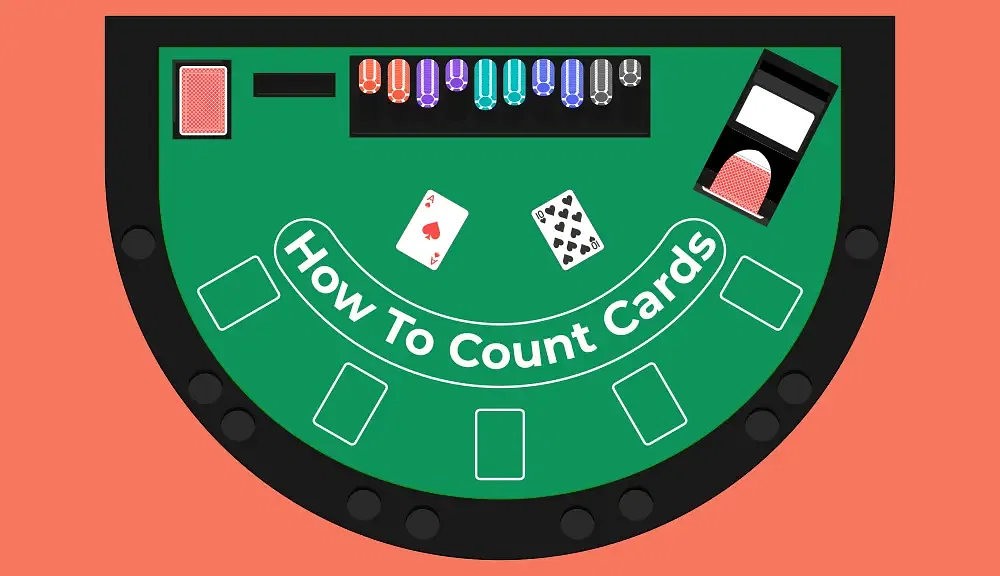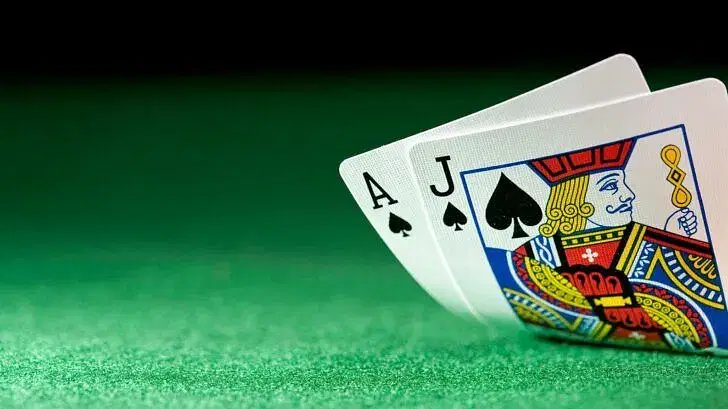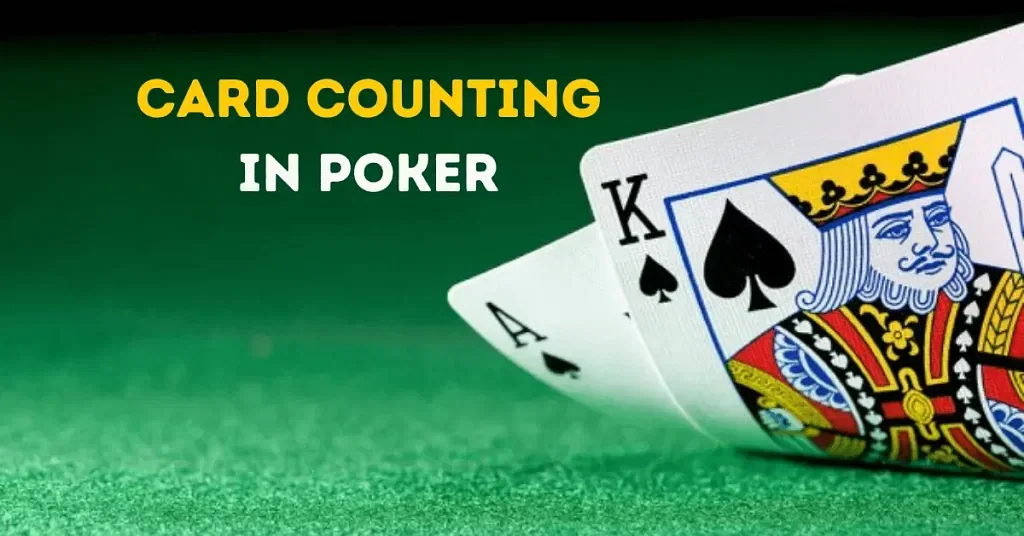Poker is a fun game dominated by chance; however, some strategies may help you enhance your gameplay. Card counting is one such strategy. The best part is that you can easily master the art of card counting in poker and take your game to the next level. While often shrouded in mystery and Hollywood drama, this fascinating skill is a strategic tool that can significantly elevate your poker prowess. Our mission is to guide you through the intricacies of card counting, leveraging both practical techniques and a strategic mindset.
Demystifying Card Counting in Poker

First, let’s debunk a common myth — card counting isn’t about memorising each card played. Instead, it’s a systematic approach to gauge probability and make informed decisions based on the evolving dynamics of the game. While how to count cards in poker diverges from the techniques used in games like blackjack, it still offers a competitive edge.
Understand that poker is a game of incomplete information. Every decision, bet, and bluff you make relies on synthesising available data. Card counting enhances your ability to deduce the likely strength of opponents’ hands and potential community cards, aligning your strategy for maximum impact.
A Sharp Memory & Keen Observation: Your Basic Tools
Before we dive deep, remember the fundamentals are as much about keen observation as they are about memory. Here’s how to harness the power of both:
- Memory Exercises: Regular practice boosts your capacity to retain card sequences, enhancing your counting ability. Memorise common card sequences or use memory palaces to reconstruct live scenarios in your mind.
- Observational Skills: Make a habit of noticing opponents’ behavioural cues and betting patterns. These subtle signals augment your reading of both the player and the cards.
Embracing these foundational tools sets the stage for exploiting card-counting techniques effectively.
Related Read: 10 Expert Tips to Become a Poker Expert: Level Up Your Skills
Card Counting Techniques and Strategies
Now that we’re equipped with the basics let’s walk through impactful strategies that transform numbers into actionable insights:
The Running Count Approach
A running count approach involves continuously adjusting your card tally as each hand reveals new community or down cards.
- Track Community Cards: As new community cards are exposed, update your count to reflect the remaining deck composition. Deduce potential hands available to opponents based on visible cards.
- Adjust for Each Hand: Utilise the running count to adapt your strategy and anticipate potential opponent strengths. For example, if more high cards remain, anticipate strong potential for flushes or straights.
Adaptive Range Reading
Instead of fixating on precise card counts, focus on the range of hands that players could potentially have.
- Developing a Range Base: Establish opponents’ likely hand ranges based on positional play and betting actions. As revealed, cards impact these ranges; adjust your count and strategy accordingly.
- Exploit Gaps in Ranges: Utilise the identified gaps in ranges to project possible advantageous moves, maximising your strategic position.
Observational Flow Technique
This method involves complementing card counting with a focus on the game’s flow, offering additional insights:
- Betting and Action Flow: Analyse the rhythm of the game — is it aggressive or cautious? Use this flow to adjust bets, leveraging known counts and inferred dynamics.
- Player Reactions: Pay attention to opponents’ reactions to community cards revealed, further refining your card and hand assessments.
Also Read: Straddle in Poker: Know When to Use and Avoid It
Implementing the Strategy: A Practical Walkthrough

Let’s illustrate how to apply these strategies in an actual poker scenario.
Imagine sitting at a popular poker table, engaged in a multi-hour session. As cards are dealt, your mission revolves around keeping a fluid running count while maintaining an eagle eye on the community cards and unfolding player behaviours.
Step-by-step Implementation:
- Track Initial Community Card Deal: Consider visible cards against predicted range probabilities. As hands play out, update your running count with each card revealed.
- Observe Player Action Patterns: Note players’ reactions to every flop, turn, and river. Watch for deviations from typical betting patterns — these nuances offer valuable insights that feedback into your card count understanding.
- Adjust Strategy Accordingly: Based on your refined running count and assessed hand dynamics, adjust your position by conservative holds or calculated bluffs.
Fusing running card counts, assessed ranges, and observed behavioural flows dramatically enhances decision-making, often revealing strategic exploitation opportunities.
The Psychological Edge: Mind Over Matter
Card counting in poker extends beyond numbers — it taps into psychology and pattern recognition. The seasoned player knows that mental fortitude and psychological insights edge out opponents beset by overconfidence or emotional decision-making.
- Exude Confidence: Demonstrating calm, efficient decision-making exerts psychological pressure on opponents, potentially forcing errors in counting or deduction.
- Maintain Neutrality: Limit predictability by masking observable tells, ensuring no giveaway cues betray your enhanced counting mastery.
Also Read: Turn Poker Positions Into Winning Moves
Ethical Considerations and Fair Play

While skilled counting offers strategic advantages, maintain a commitment to fair play. Card counting must never devolve into unethical actions like collusion or cheating, which compromise the integrity of the game and personal reputation.
Final Thoughts: Mastery Awaits
Remember – success in online Poker hinges on practice, patience, and a sharp mind capable of adaptive strategy execution.
You’re now armed with the expertise to navigate poker’s complexities, aligning mental acuity with counting finesse to dominate any table.
Ready to take on the challenge? Play on Fun88!
Frequently Asked Questions (FAQs)
Card counting is legal in poker as it relies on skill and memory rather than illicit methods. Unlike in blackjack, where casinos can frown upon card counting, it’s simply leveraging available information in poker.
No, while it enhances decision-making, card counting doesn’t guarantee wins. Poker involves chance and unpredictability, and factors such as opponents’ strategies and luck still play significant roles in determining outcomes.
Engage in regular gameplay, use online simulations, and focus on deck memorisation exercises. These practices enhance your counting proficiency and overall strategic agility, helping you apply techniques confidently during live games.
Card counting refines your ability to predict potential hands and probable outcomes, allowing for more calculated betting decisions. Adopt flexible betting tactics that adjust based on analysed probabilities and opponent actions.
Newcomers often try memorising too much too soon or fixate on specific cards instead of overall probability. Effective counting involves understanding statistical trends and situational dynamics rather than focusing on every card.
No, beginners should blend card counting with developing other essential skills, such as understanding poker psychology, position strategy, and bankroll management, creating a comprehensive approach to the game.
Yes, apps and simulation software provide excellent platforms for practising card counting in a controlled environment. They offer immediate feedback and facilitate skill development without the pressure of live stakes.
Star it if you find it helpful.

